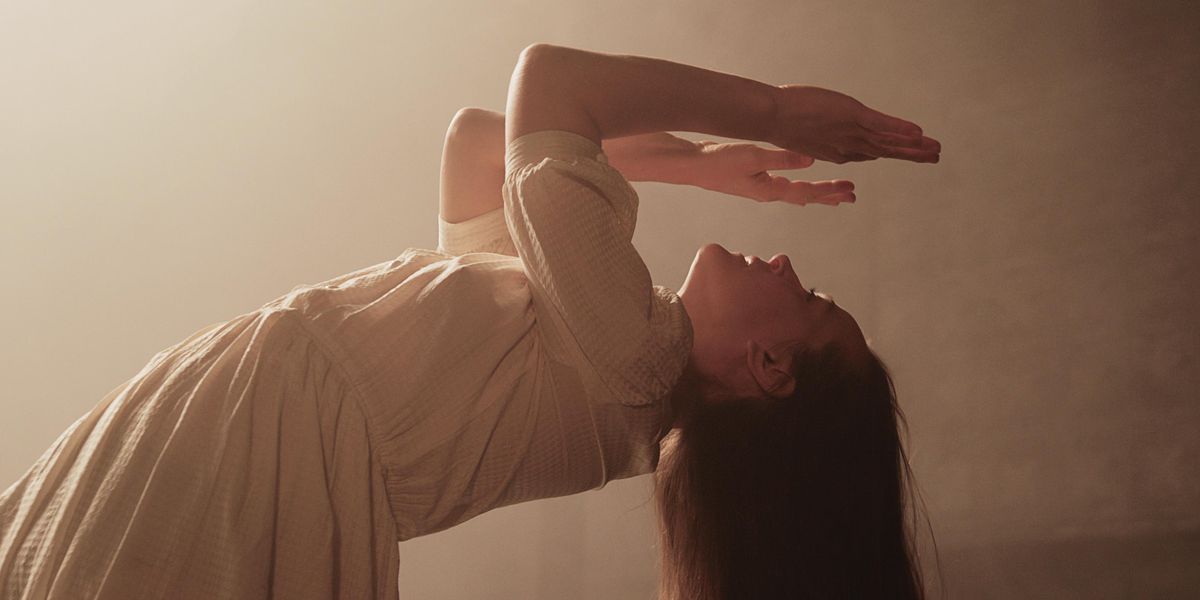Mind–Body Connection Is Key for Dancers. But What Happens When It's Too Intense?
When Bobbi Jene Smith, then a freshman at The Juilliard School, first saw the Batsheva Dance Company perform at Lincoln Center, she was blown away by the freedom the dancers seemed to experience onstage. “There was power and vulnerability at the same time,” she says. “I had never seen people given permission to be all the colors of themselves.” A few years later, Smith was one of them; she left school to move to Tel Aviv and join the famed contemporary company.
But during her early days with Batsheva, Smith learned that dancing with the level of embodiment she’d so admired onstage came with its own set of risks. “It became very unclear where I began and the work ended,” she says. “That line became blurry, and I felt extremely vulnerable.” A turning point came for Smith after a Gaga class led by Batsheva’s then-director Ohad Naharin. “I told him that I felt like he was inside my brain, like we were in a psychology class. And he replied, ‘No Bobbi, this is not psychology. This is physical.’ ”
“That was a huge switch, realizing I didn’t have to be so heady,” says Smith, who left Batsheva in 2014 to focus on her own choreography. “I’ve learned that the craft of being an artist is how to go to these deep, scary places, but still feel the light.”
Dancers can spend their whole careers seeking out a rich mind–body connection. Achieving that sense of integration can be incredibly satisfying, leading to better physical and mental health, and a more holistic performance quality. But what happens when that connection goes too far, leading to anxiety or obsession instead of artistic fulfillment?
Understanding the Mind–Body Connection
As mental health awareness becomes less stigmatized in the Western dance world, the term “mind–body connection” is thrown around more than ever. But for certified movement therapist Erica Hornthal, the idea covers not only how our bodies impact our mental health, but how our mental health also impacts our bodies. “When our body is our livelihood, we are afraid of what will happen if the connection is disturbed,” says Hornthal.
When there’s harmony between these two spheres, dancers can thrive. But it’s very easy to throw the balance off kilter. Clinical psychologist Dr. Paula Thomson believes that’s because dancers are prone to “overexcitabilities,” a psychological tenet developed by Dr. Kazimierz Dabrowski in his theories about gifted children. The same characteristics that can give dancers the ability to focus single-mindedly, move in extraordinary ways and emote onstage can also make them especially susceptible to anxiety, depression and perfectionism. “Any of these giftedness components, if dancers aren’t given the appropriate skills to harness them, can run amok,” says Thomson.
It Starts With Awareness
When helping clients to develop a healthy mind–body connection, Hornthal starts with practicing awareness. “It’s not about changing anything, but just noticing,” she says. “How did you feel at the beginning of class versus the end of class? Learn to track your emotions, and how they live in your body.”
Recognizing your body’s limits and vulnerabilities without judgment can help dancers steer away from the trap of perfectionism. “Allow yourself to start at zero. Just let it be information,” says Smith, who likes to check in with herself throughout the day to make sure that she’s maintaining equilibrium. “Notice the tone of voice that you speak to yourself in, and if you’re constantly labeling things good or bad.”
Shift Your Focus
While building awareness can be hugely beneficial, if you find yourself hyper-focused on how you feel all the time, take a step back. “Don’t let body scanning and emotion run the show,” says Thomson, who regularly sees dancers allow experimentation with somatic forms become a new kind of obsession. “They’ll go to the ballet barre, and the music is playing, but they don’t even care because they’re so focused on lengthening their neck, or feeling their rotator muscles,” says Thomson. “They forget they’re dancing because they’re so busy with that introspection, tracking what’s going on internally.”
If that’s the case, work to shift your awareness from the internal to the external. “Get back into a relational situation,” says Thomson. “Think about the music, or the person you’re dancing with.” Smith always brings it back to finding balance. “If I’m getting too much in my head or in the stories or metaphors, I need to go back to the physicality,” she says. “I also use other dancers as mirrors or north stars, and ask them what they’re thinking to just try to get out of my own way.”
Outside of the studio, it can help to get into a problem-solving mode of thinking to crawl out of this rabbit hole. Thomson urges dancers to shift their thoughts to something quotidian and grounded: This can be as simple as doing the dishes, cleaning out your inbox or chopping vegetables.
Build Resilience
Though dancers are engaging with their bodies daily, doing the same types of movement again and again can keep them from really checking in with how they feel. “Being aware of our bodies is not just a physical sensation, but understanding where our emotions live,” says Hornthal. “Sometimes we’re hyperaware, but without realizing what we really need to focus on.”
She recommends that dancers take their day off to mix it up, finding ways to indulge in softer or slower movement, whether it’s restorative yoga, tai chi or even just a slow walk in the park. “That’s what builds our mind–body capacity, and allows us to manage our emotions more,” she says. “It might bring up anxiety, but that’s okay. It doesn’t have to be for long.”
It also helps not to reserve all of your day’s activity for the studio. “We outsource so much movement these days, and then we wonder why when we’re dancing so much agitation comes up,” says Hornthal. For Smith, walking between the theater and her home provides a crucial transition. “That walk is a way of letting go, or letting the thoughts rest a bit,” she says. “It’s just a state of mind of listening to your surroundings, and being present where you are.”
Expand Your Sense of Self-Worth
Being in tune with your body to the point of obsession can also affect your self-worth. If a dancer’s sense of self becomes too tied up in their turnout or a performance it can lead to rumination, and make it hard to focus on anything outside of themselves. Those behaviors, if not monitored, can leave a dancer prone to issues like social isolation or disordered eating. “It becomes a disenfranchisement of self, this tiny piece of real estate where you need to exert control,” cautions Thomson. “Expand your self-identity, and start opening up what the self is.”
Returning to the simple joy of dancing can help you get to that point. Smith has noticed that her creativity and mental health suffer when the balance between ambition and love is off-kilter. “When the ambition is what’s driving you, I think you’re more prone to injury and dissatisfaction,” she says.
When Smith notices a student lacking motivation on a particular day, she encourages them to explore that feeling, not to fight it. “If you don’t want to move today, try being really still. If you’re still for a minute, you might want to stomp your foot and get angry about not wanting to move, but stomping your feet is a movement, and that’s dancing.”
Staying Calm During a Pandemic
Living in the midst of a global pandemic can make dancers, already in tune with their bodies, more susceptible to obsessive worrying and anxiety. “Dancers always live with the threat that injury or illness could end their career, so they might be more on edge,” says Thomson. If you find yourself constantly scanning for symptoms of COVID-19, work to shift your focus to other activities. Thomson also recommends checking out the series of webinars on mental health during the coronavirus pandemic put out by the International Association for Dance Medicine & Science.
Ask for Help
If seeking out a mind–body connection is becoming overwhelming, or interfering with your daily habits, it might be useful to get in touch with a therapist or other mental health professional. Thomson recommends looking out for signs of poor sleep, disordered eating, lack of interaction with family or friends, or self-injurious behavior. You can find a provider who specializes in working with dancers through the International Association for Dance Medicine & Science’s database.
A Lifelong Practice
Hornthal always reminds her clients that “Practice makes perfect” is not a useful mindset when it comes to this type of work. She prefers “Practice makes habit.” Pursuing a healthy mind–body connection will look different for each individual, and is a lifelong process best eased into gradually. Too much too soon can also lead to re-traumatizing the body unintentionally. “The body houses everything, and it can be a huge detriment to open a can of worms we don’t know how to close,” she says.
Thomson urges dancers to start slowly, and put themselves on a schedule, leading up to longer practices. This can help bring more longevity and sustainability to their craft. “When dancers hyper-focus on little things, what gets lost is their creative self, their coordination in movement and their ability to learn,” she says. “They lose huge areas of what dance is.”





